Qmed | How unbridled optimism can spur innovation
February 22, 2016
Qmed — February 17, 2016 | Brian Buntz
This is a summary. Read original article in full here.
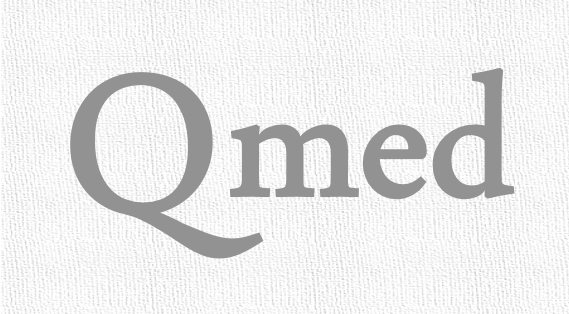 We are at a stage in history where technologies can be applied to solve many of humanity’s biggest problems. To drive enormous change, we need medical device innovators with an open source ethos, and a willingness to rethink what is possible.
We are at a stage in history where technologies can be applied to solve many of humanity’s biggest problems. To drive enormous change, we need medical device innovators with an open source ethos, and a willingness to rethink what is possible.
“Technology’s at its best when used to heal, not hinder, and enhance human potential,” says Dave Zaboski, an animator and classically trained painter who gave a keynote February 9, 2016 at the UBM* conference Medical Design + Manufacturing, called MD+M west.
“The ability of technologists to improve the lives of others is increasing dramatically. It’s all about exponentially accelerating technologies empowering like minded people aligned around a shared goal.”
Consider for instance the Limbitless Solutions project, a student led non-profit based at the University of Central Florida, which distributes 3D printed prosthetic arms to children for free. To date, the group has distributed 2000 body powered arms to kids in more than 40 countries.
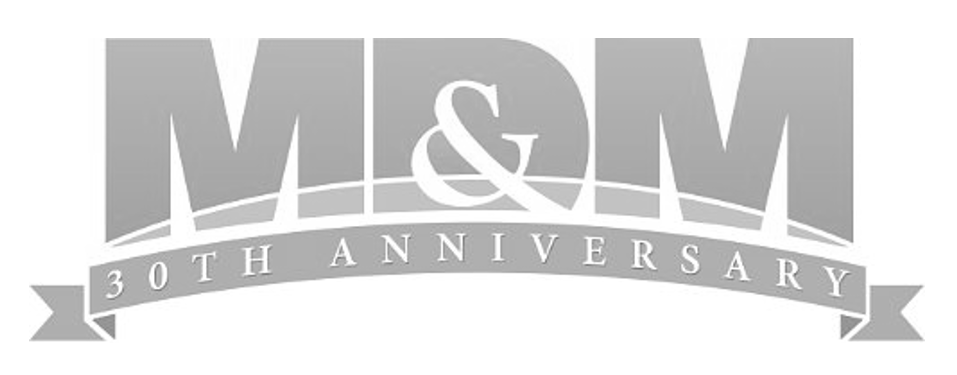 “Behind the curtain, all of us are students. When I first started, I had no idea that it was just college students getting together to create these arms for someone else,” said Stephanie Valderrama, Limbitless creative director.
“Behind the curtain, all of us are students. When I first started, I had no idea that it was just college students getting together to create these arms for someone else,” said Stephanie Valderrama, Limbitless creative director.
She shared the keynote stage with Dominique Courbin, director of production at Limbitless, and renowned futurist and author Ray Kurzweil.
gallery | UBM event Medical Design + Manufacturing
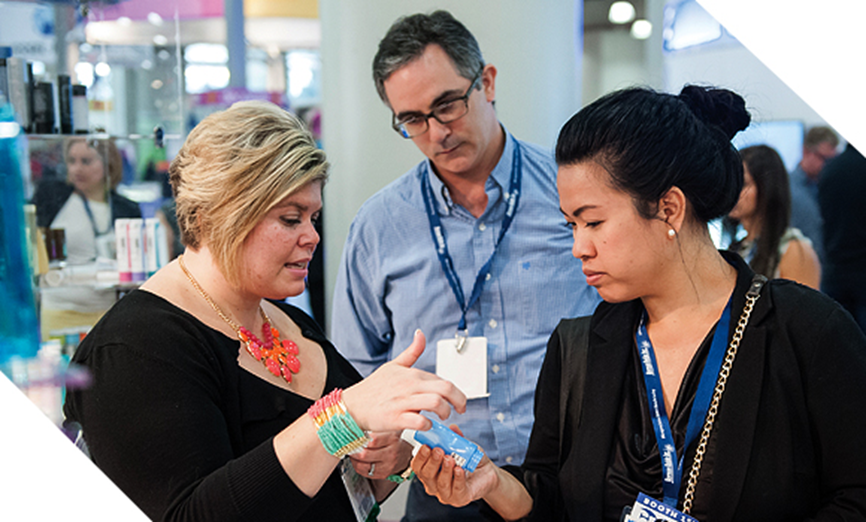
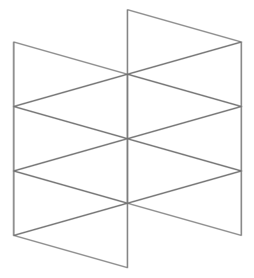 image | Exhibitors gather at UBM event Medical Design + Manufacturing. Over 2,100 innovative suppliers demo latest, ground breaking technologies and comprehensive products.
image | Exhibitors gather at UBM event Medical Design + Manufacturing. Over 2,100 innovative suppliers demo latest, ground breaking technologies and comprehensive products.
The program offered interactive hands-on sessions and panel discussions led by industry thought leaders with valuable insights.

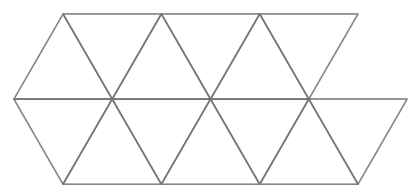 image | Medical device manufacturers look for inspiration and cutting edge products and services.
image | Medical device manufacturers look for inspiration and cutting edge products and services.
“It was beautiful to see that passion really change in our community, to see that we’re not all engineers as well. I’m an artist, we have fashion designers. We’re open to have others help create these arms.”
The group made all of its current prosthetic designs open source, releasing upgraded plans so anyone can use or help create future design iterations. We’re at a unique point in time when the divisions between traditionally separate fields are blurring, clearing the way for insights from niche disciplines to be applied to other fields.
“We can now fully cross pollinate different disciplines to solve problems and challenges in a more holistic way,” Dave Zaboski said, who also teaches creativity at Singularity University, which Ray Kurzweil co-founded. “In archetypal terms, we have concluded our individual hero’s journey — our deep dive into particular discipline specialties — we can now share expertise to solve bigger problems.”
 This was a theme in Ray Kurzweil’s keynote address at MD+M west. Kurzweil anticipates continued advances in artificial intelligence and machine learning to have profound cultural implications.
This was a theme in Ray Kurzweil’s keynote address at MD+M west. Kurzweil anticipates continued advances in artificial intelligence and machine learning to have profound cultural implications.
People should question whether the same types of problems that have affected humanity in the past will continue to do so in the future, Kurzweil said. While the earth’s quickly growing population is concerning, tech will ultimately meet the resources and needs of humanity in the future. “I think we will avoid the kind of problems we had before,” Kurzweil said.
Kurzweil pointed to internet history. “If you remember the 1990s, there was the internet craze, and if you had the URL dog.com, you were a billionaire.
“Then in 2000, people took stock and said you can’t really make money with these websites. And we had the internet crash,” he recounted. “After the exponential growth continued, and we had mature understanding of what was required, we now have internet companies like Google that are worth half a trillion dollars.”
Kurzweil and Limbitless team members Stephanie Valderrama and Dominique Courbin asked how tech can solve previously unsurmountable challenges. “Ray Kurzweil certainly has optimism in his talk. The work Dominique and Stephanie are doing is beautifully aligned with a whole view of tech. That’s the future,” Zaboski said.
gallery | UBM event Medical Design + Manufacturing

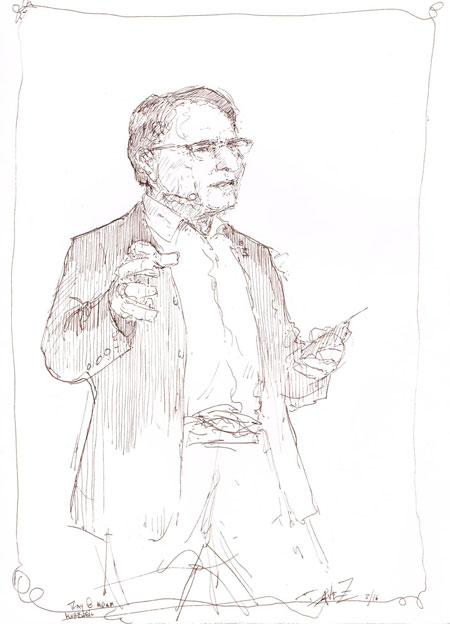
image | At UBM conference MD+M west, Dave Zaboski animator and classically trained painter, gave a speech and sketched Ray Kurzweil, who gave a keynote.
related reading:
Dave Zaboski | The Divine Line
Dave Zaboski | The Alchemy of Creativity
keynote | Science, Technology and Invention: strategies to create the future
by Ray Kurzweil
about | The democratization of innovation is a turbulent process with rapid creation, violent destruction, many winners and many losers. Despite the apparent chaos, we can discern predictable patterns. The pace of innovation itself is doubling every decade. The overall price-performance and capacity of every form of information technology grows exponentially, generally doubling in a year or less. As information technology achieves each new level of price-performance and capacity, new applications become feasible and existing business models lose their viability.
Another implication is that the tools of disruptive change have been democratized. A couple of students created Google on their thousand dollar laptops. A few years later, a couple of undergraduates created Facebook with tools that everyone has. The rate of change is now so rapid that even three to five year business plans need to consider that every level of an industry will undergo major changes during that period.
It’s not just the devices we carry around that are influenced by these exponential changes. Health and medicine is now an information technology with the collection of the human genome, the means of changing genes in a mature individual, and the ability to design interventions on computers and to test them on biological simulators. Even energy will be transformed as we apply nanotechnology to the design of solar panels and energy storage devices. The means to change the world are in everyone’s hands.
keynote bio | Ray Kurzweil: influential author, inventor, futurist. Ray Kurzweil has been described as “the restless genius” by The Wall Street Journal, and “the ultimate thinking machine” by Forbes. Inc ranked him no. 8 among entrepreneurs in the United States, calling him the “rightful heir to Thomas Edison,” and PBS selected Kurzweil as one of the “revolutionaries who made America.” He is considered one of the world’s leading inventors, thinkers, and futurists.
That’s not all. Kurzweil was the first to invent many things — the first CCD flatbed scanner, omni-font optical character recognition, print-to-speech reading machine for the blind, text-to-speech synthesizer, and large vocabulary speech recognition, are among his list of creations.
gallery | UBM event Medical Design + Manufacturing
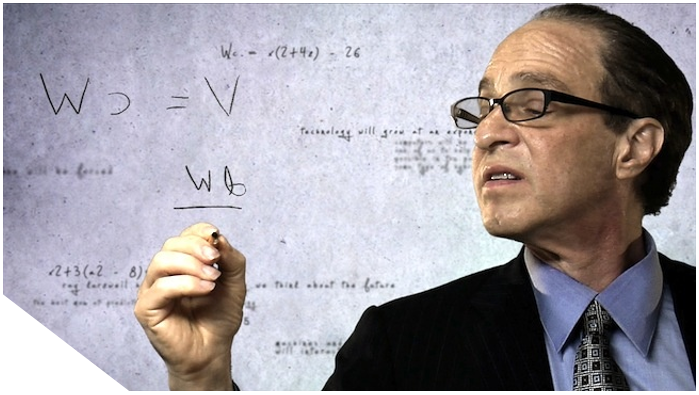
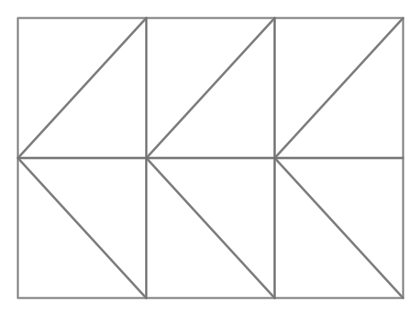 image | Keynote speaker Ray Kurzweil anticipates advances in artificial intelligence and machine learning to have profound cultural implications.
image | Keynote speaker Ray Kurzweil anticipates advances in artificial intelligence and machine learning to have profound cultural implications.
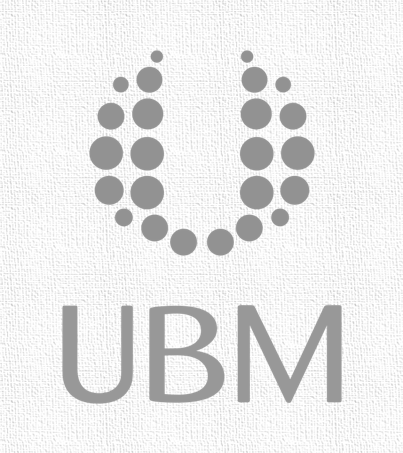 related reading:
related reading:
UBM | events
UBM | events — Medical Design + Manufacturing: east
UBM | events — Medical Design + Manufacturing: west
UBM | Med Tech World
Qmed | main
Qmed | The future of medical technology according to Ray Kurzweil
Qmed | How unbridled optimism can spur innovation
* UBM is United Business Media